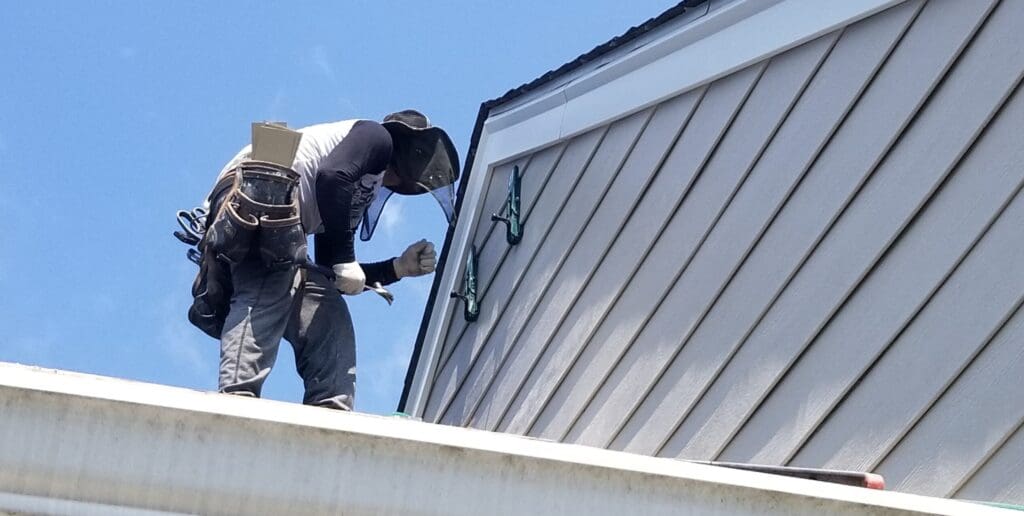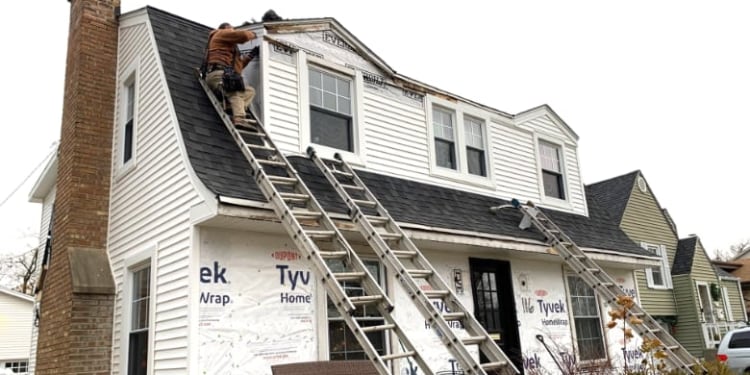Your Go-To Morris Siding Contractor for All Residential Siding Needs
Your Go-To Morris Siding Contractor for All Residential Siding Needs
Blog Article
The Crucial Overview to the Various Sorts Of House Siding and Their Distinct Benefits
In the world of home enhancement, picking the ideal house siding is a crucial decision that affects both visual appeal and useful efficiency. With so many choices to consider, which siding product really stands out for your certain project?
Wood Home Siding
Wood home siding, a prominent selection for household outsides, offers an ageless aesthetic that integrates all-natural charm with architectural honesty. This exterior siding product is available in various styles, including clapboard, roof shingles, and board-and-batten, allowing property owners to tailor their appearance to match their style preferences. Timber house siding is generally crafted from long lasting species such as cedar, redwood, or pine, which are known for their durability and capability to endure environmental stress factors.
Among the key benefits of wood exterior siding is its superb insulation residential or commercial properties, which can add to power effectiveness and lower home heating expenses. Additionally, wood home siding is eco-friendly, making it an environmentally friendly alternative when sourced sustainably. Routine upkeep, consisting of paint or discoloration, can extend its life-span and improve its look, enabling home owners to maintain the natural beauty of the timber.
However, prospective downsides include sensitivity to pests, rot, and weather damages, necessitating ample treatment and maintenance - morris siding contractor. In spite of these concerns, when appropriately taken care of, timber siding can offer a sturdy and beautiful remedy that improves the personality of a home while supplying a cozy, inviting atmosphere

Vinyl House Siding
Plastic exterior siding has actually emerged as a leading option for homeowners seeking a low-maintenance exterior choice that integrates longevity and affordability. This functional material is crafted from polyvinyl chloride (PVC), making it resistant to various weather, including moisture and UV rays. Because of this, plastic exterior siding does not warp, rot, or fade, guaranteeing long-lasting aesthetic allure.
One of the key advantages of plastic house siding is its extensive series of shades and designs, permitting house owners to accomplish the desired appearance for their property without the demand for frequent repainting. Additionally, plastic siding is simple to set up, which can significantly minimize labor expenses throughout building or renovation jobs.
Plastic exterior siding likewise adds to energy performance. Many options function insulation support, which boosts thermal efficiency, aiding to preserve comfortable indoor temperature levels and possibly lowering energy expenses. Its smooth surface promotes very easy cleansing, needing just periodic cleaning with a garden pipe to eliminate dust and debris.
Fiber Concrete House Siding
Fiber cement house siding has acquired grip among contractors and property owners alike due to its remarkable mix of durability and visual flexibility. Made up of a mix of sand, concrete, and cellulose fibers, this siding option is engineered to endure severe weather, including high winds, hefty rainfall, and temperature changes, making it a durable selection for property outsides.

One of the main advantages of fiber cement house siding is its resistance to parasites, such as termites, and its non-combustible nature, offering enhanced fire safety and security. morris siding contractor. wikipedia reference Furthermore, it is offered in a broad range of colors, textures, and styles, allowing home owners to achieve their wanted aesthetic without sacrificing efficiency
An additional benefit is its reduced upkeep requirements; fiber cement siding generally requires painting or discoloration every 5-10 years, which is much less constant than other products. Its long life contributes to a reduced general price of ownership, as it reduces the requirement for frequent fixings or substitutes.
Eventually, fiber concrete home siding represents an excellent financial investment for those seeking a durable, attractive, and versatile exterior alternative, integrating both type and feature to enhance the home's aesthetic allure.
Steel Siding
The allure of metal home siding lies in its robust longevity and contemporary visual allure, making it a popular option for contemporary style. Offered in products such as aluminum and steel, steel siding supplies a series of colors and coatings, permitting house owners to achieve a personalized look that matches their style vision.

Power efficiency is an additional substantial benefit, as many steel siding products are developed with insulation choices that aid control interior temperatures. This can bring about lowered power costs with time. Additionally, steel home siding is frequently recyclable, making it an ecologically pleasant option for sustainability-minded home owners.
The installation process for steel exterior siding can be reasonably simple, leading to a quicker turn-around time for building jobs. In general, metal siding combines capability and style, making it a functional alternative for those looking for a enduring and visually enticing outside coating.
Block and Rock Exterior Siding
Brick and stone house siding stands apart as a timeless option that enhances the visual beauty of any type of home. Known for their durability and reduced maintenance, these products offer a remarkable roi while raising the home's aesthetic allure. Offered in numerous colors, structures, and patterns, brick and rock can be tailored to suit varied architectural designs, from typical to modern.
Among the main benefits of brick and stone siding is their energy performance. Both materials possess natural insulating residential properties that help control interior temperature levels, potentially minimizing heating & cooling prices. Furthermore, they offer premium fire resistance contrasted to various other exterior siding alternatives, adding to boosted security.
An additional benefit is their long life. Block and rock can last for years, typically needing marginal upkeep past periodic cleaning. Unlike wood home siding, they are invulnerable to parasites and rot, guaranteeing a resilient outside that endures the components.
Verdict
In recap, the choice of exterior siding dramatically impacts a home's aesthetic charm, power effectiveness, and upkeep requirements. Each type of siding-- whether timber, plastic, fiber brick, concrete, or metal and rock-- supplies special advantages tailored to different property owner preferences and environmental problems.
One of the main benefits of timber home siding is its outstanding insulation buildings, which can add to energy performance and lower home blog here heating prices. Furthermore, wood siding is eco-friendly, making it an eco pleasant alternative when sourced sustainably.One of the key benefits of steel exterior siding is its resistance to various ecological variables.Power effectiveness is one more substantial advantage, as many steel home siding products are created with insulation alternatives that help regulate indoor temperatures. Each type of exterior siding-- whether wood, vinyl, fiber steel, brick, or cement and rock-- offers one-of-a-kind advantages customized to various home owner preferences and environmental problems.
Report this page